Optimization of Screw Mixer to Improve Drying Performance of Livestock Manure Dryer Using CFD Analysis
Abstract
:1. Introduction
2. Configuration of the Screw-Type Dryer
3. Finite Element Analysis of the Dryer Screw
3.1. Finite Element Model
3.2. Theoretical Background
3.2.1. Reynolds-Averaged Navier–Stokes Equations
3.2.2. Turbulence Model
3.3. Analysis Conditions
3.4. Analysis Parameters
3.5. Measurement for Moisture Content of the Livestock Manure
3.6. Optimal Design of the Dryer Screw Using the Response Surface Method
Optimal Design of the Screw Gap Shape
4. Conclusions
- Based on the field experience, the screw-type dryer was manufactured, and the following results were obtained:
- -
- Human excrement has an average moisture content of 74.5%, and its viscosity is 3.5–5.5 Pas. Thus, the viscosity of livestock manure (moisture content: 76.3%) was determined to be 4.5 Pas (average viscosity of human excrement).
- -
- As a result of applying the screw-type dryer to finite element analysis, the turbulence kinetic energy (0.299 J/kg) was obtained and moisture content of the livestock manure reduced from 76.3% to 41.8%.
- The design parameters for the double blade screw are determined by the trial and error method, and their order to influence the turbulence energy is as follows:
- -
- Pitch (P) → thickness (t) → height (H) → helix angle (θ) → distance between the left and right blades (L) → angle of the gap (α).
- Based on the screw-type dryer manufactured in the field, the optimal design of the dryer screw was obtained from the response surface method, increasing the turbulence kinetic energy by 35% (0.299 → 0.46 J/kg), which reduced moisture content of the livestock manure from 41.8% to 24.7%.
Author Contributions
Funding
Institutional Review Board Statement
Informed Consent Statement
Data Availability Statement
Conflicts of Interest
References
- Baetge, S.; Kaltschmitt, M. Rice straw and rice husks as energy sources-comparison of direct combustion and biogas production. Biomass Convers. Biorefin. 2018, 8, 719–737. [Google Scholar] [CrossRef]
- Orlando, M.Q.; Borja, V.M. Energies, Preteatment of animal manure biomass to improve biogas production: A review. Control. Eng. Pract. 2005, 13, 789–803. [Google Scholar]
- Nasir, I.M.; Ghazi, T.M.; Omar, R. Production of biogas from solid organic wastes through anaerobic digestion: A review. Appl. Microbiol. Biotechnol. 2012, 95, 321–329. [Google Scholar] [CrossRef] [PubMed]
- Tallou, A.; Haouas, A.; Jamali, M.Y.; Atif, K.; Amir, S.; Aziz, F. Review on cow manure as renewable energy. In Smart Village Technology; Springer: Cham, Switzerland, 2020; Volume 17, pp. 341–352. [Google Scholar]
- Bijarchiyan, M.; Sahebi, H.; Mirzamohammadi, S. A sustainable biomass network design model for bioenergy production by anaerobic digestion technology: Using agricultural residues and livestock manure. Energy Sustain. Soc. 2020, 10, 19. [Google Scholar] [CrossRef] [Green Version]
- Philippe, F.X.; Nicks, B. Agriculture, Review on greenhouse gas emissions from pig houses: Production of carbon dioxide, methane and nitrous oxide by animals and manure. Ecosyst. Environ. 2015, 199, 10–25. [Google Scholar] [CrossRef] [Green Version]
- Rehman, K.; Cai, M.; Xiao, X.; Zheng, L.; Wang, H.; Soomro, A.A.; Zhou, Y.; Li, W.; Yu, Z.; Zhang, J. Cellulose decomposition and larval biomass production from the co-digestion of dairy manure and chicken manure by mini-livestock (Hermetia illucens L.). J. Environ. Manag. 2017, 196, 458–465. [Google Scholar] [CrossRef] [PubMed]
- Prapaspongsa, T.; Poulsen, T.G.; Hansen, J.A.; Christensen, P. Energy production, nutrient recovery and greenhouse gas emission potentials from integrated pig manure management systems. J. Sustain. Circ. Econ. 2010, 28, 411–422. [Google Scholar] [CrossRef] [PubMed]
- Holzem, M.M.; Katers, J.F. Life-cycle analysis of advanced manure management systems for a wisconsin confined animal feeding operation (CAFO). Appl. Eng. Agric. 2019, 35, 51–59. [Google Scholar] [CrossRef]
- Dennehy, C.; Lawlor, P.G.; Jiang, Y.; Gardiner, G.E.; Xie, S.; Nghiem, L.D.; Zhan, X. Greenhouse gas emissions from different pig manure management techniques: A critical analysis. Front. Environ. Sci. Eng. 2017, 11, 11. [Google Scholar] [CrossRef]
- Bao, Z.; Wang, P.; Qin, Z.; Jia, J.; Zhao, X. Innovative design of dryer in utilization and desposal of livestock and poultry manure. J. Phys. 2020, 1578, 012173. [Google Scholar]
- Li, X.; Zheng, W.; Li, B.; Tong, Q. Optimization of low-temperature drying of laying-hen manure using response surface methodology. J. Air Waste Manag. Assoc. 2020, 70, 206–218. [Google Scholar] [CrossRef] [PubMed]
- Aboltins, A.; Kic, P. Comparison of two methods of poultry manure drying. Eng. Rural Dev. 2014, 5, 143–149. [Google Scholar]
- Aboltins, A.; Kic, P. Forced convection in drying of poultry manure. Agron. Res. 2015, 13, 215–222. [Google Scholar]
- Kic, P.; Aboltins, A. Convective drying of poultry manure by different air speeds. In Proceedings of the 12th Internatioanl Scientific Conference: Engineering for Rural Development, Jelgava, Latvia, 23–24 May 2013; pp. 121–125. [Google Scholar]
- Nayyeri, M.A.; Kianmehr, M.H.; Arabhosseini, A.; Hassan, S.R.; Aghbashlo, M. Drying behavior and mathematical modeling of dairy cattle manure in a convective dryer. Appl. Eng. Agric. 2010, 26, 689–697. [Google Scholar] [CrossRef]
- Raouzeos, G. The ins and outs of indirect drying: Consistent with the diversity of chemical-process-industries materials that undergo drying, a wide variety of contact dryers have been brought to the marketplace. However, there is a common set of principles for their process design, and for specifying them. Chem. Eng. 2003, 110, 30–38. [Google Scholar]
- Meter, F.R. Zonal Two Equation k–ω Turbulence Models for Aerodynamic Flows. In Proceedings of the 23rd Fluid Dynamics, Plasmadynamics, and Lasers Conference, Orlando, FL, USA, 6–9 July 1993; pp. 93–2906. [Google Scholar]
- Meter, F.R. Two-equation eddy-viscosity turbulence models for engineering applications. AIAA J. 1994, 32, 1598–1605. [Google Scholar] [CrossRef] [Green Version]
- Gherasim, I.; Taws, M.; Galanis, N.; Nguyen, C.T. Heat transfer and fluid flow in a plate heat exchanger part I. Experimental investigation. Int. J. Therm. Sci. 2011, 50, 1492–1498. [Google Scholar] [CrossRef]
- Gherasim, I.; Taws, M.; Galanis, N.; Nguyen, C.T. Heat transfer and fluid flow in a plate heat exchanger part II: Assessment of laminar and two-equation turbulent modes. Int. J. Therm. Sci. 2011, 50, 1499–1511. [Google Scholar] [CrossRef]
- Rose, C.; Parker, A.; Jefferson, B.; Cartmell, E. The Characterization of feces and Urine: A Review of the Literature to inform Advanced Treatment Technology. Environ. Sci. Technol. 2015, 45, 1827–1879. [Google Scholar] [CrossRef] [PubMed] [Green Version]
- Hwangbo, J.; Hong, E.H.; Park, H.D.; Kim, D.W.; Cho, S. The study on the amount and major compositions of excreta from swine. J. Anim. Sci. Technol. 2010, 52, 319–328. [Google Scholar] [CrossRef] [Green Version]




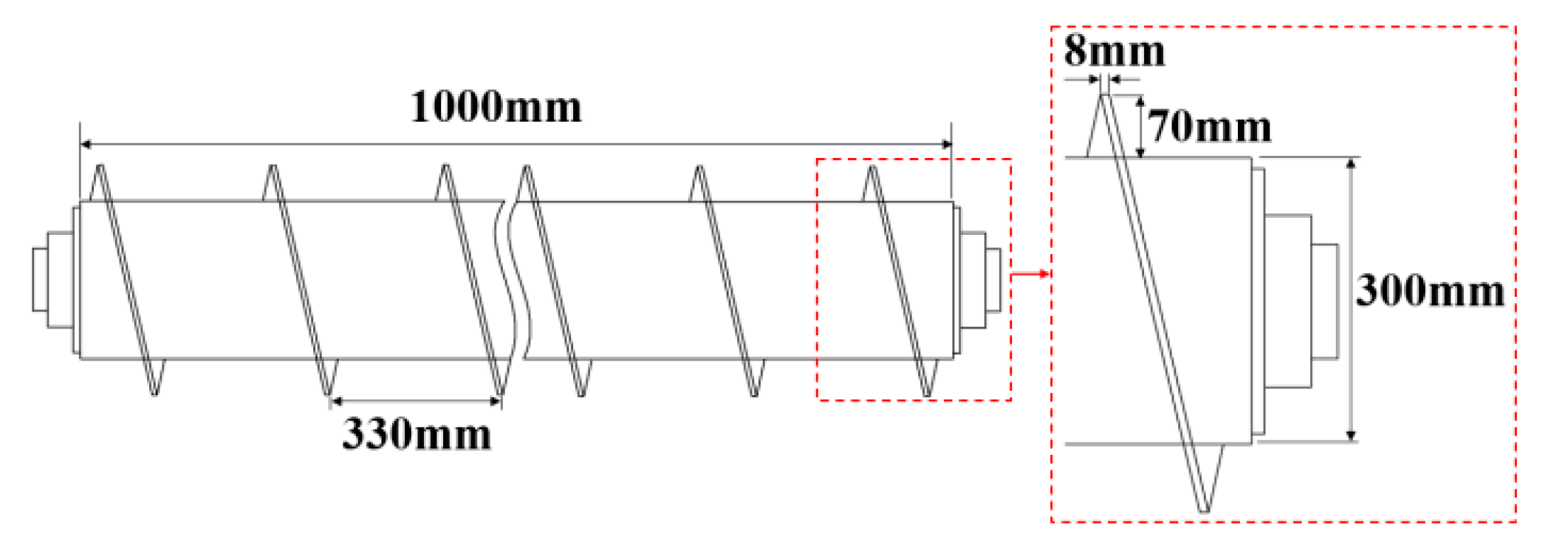
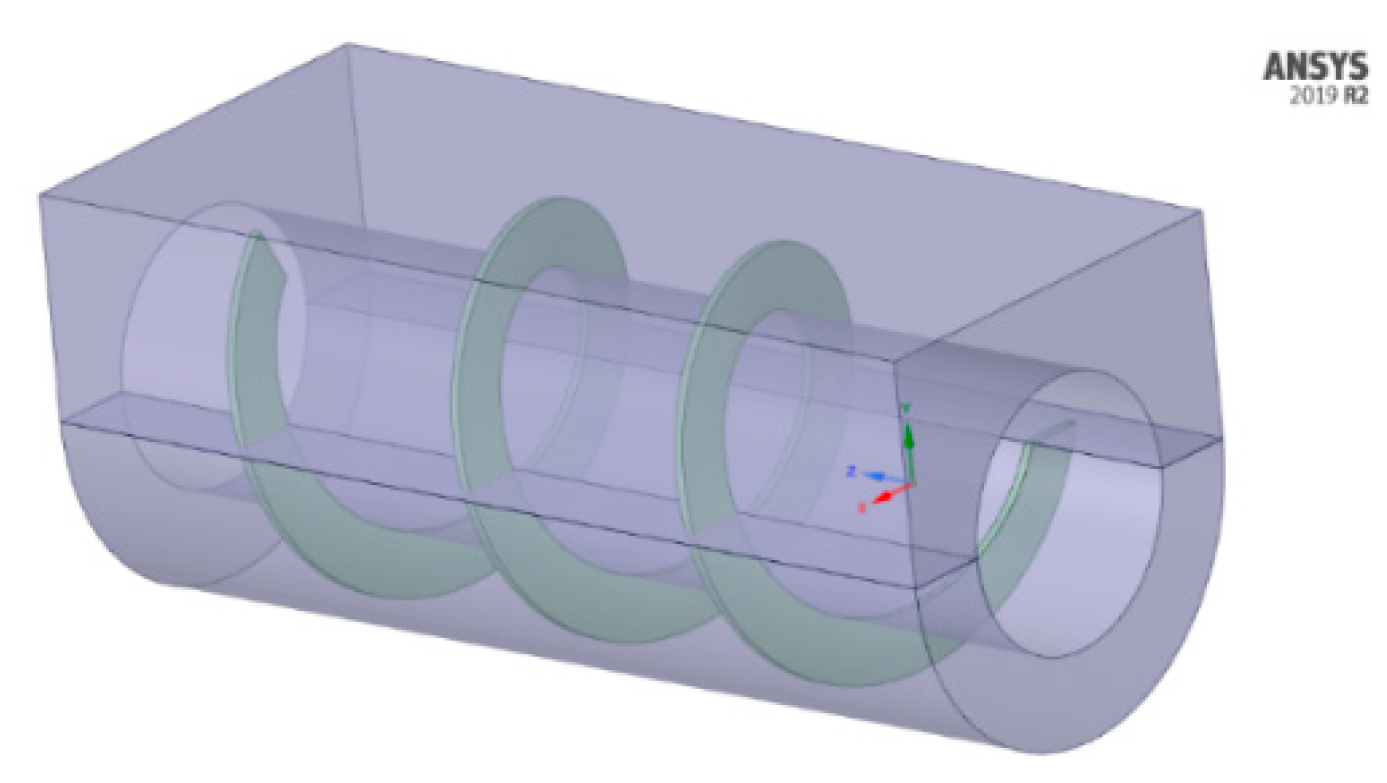
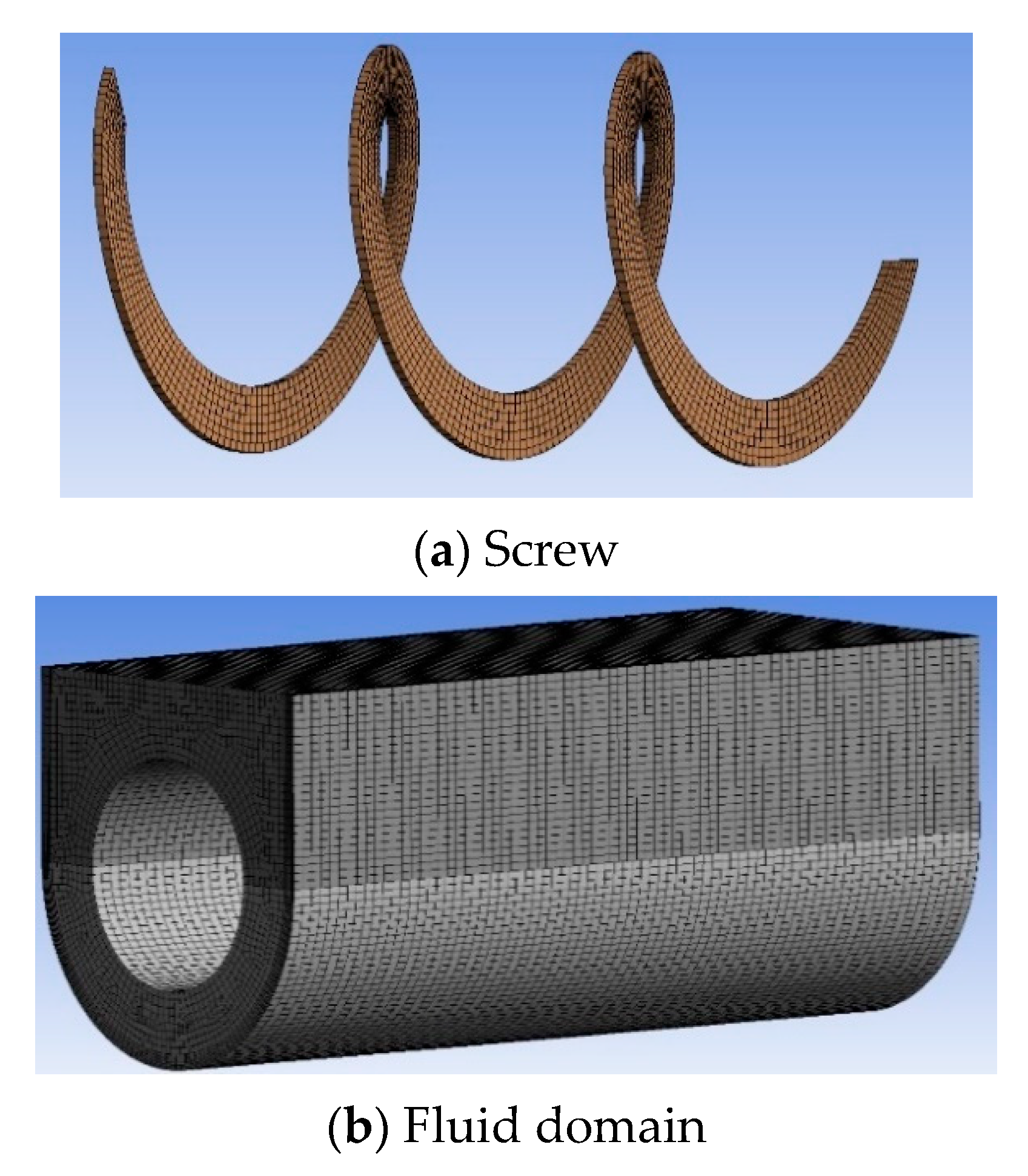




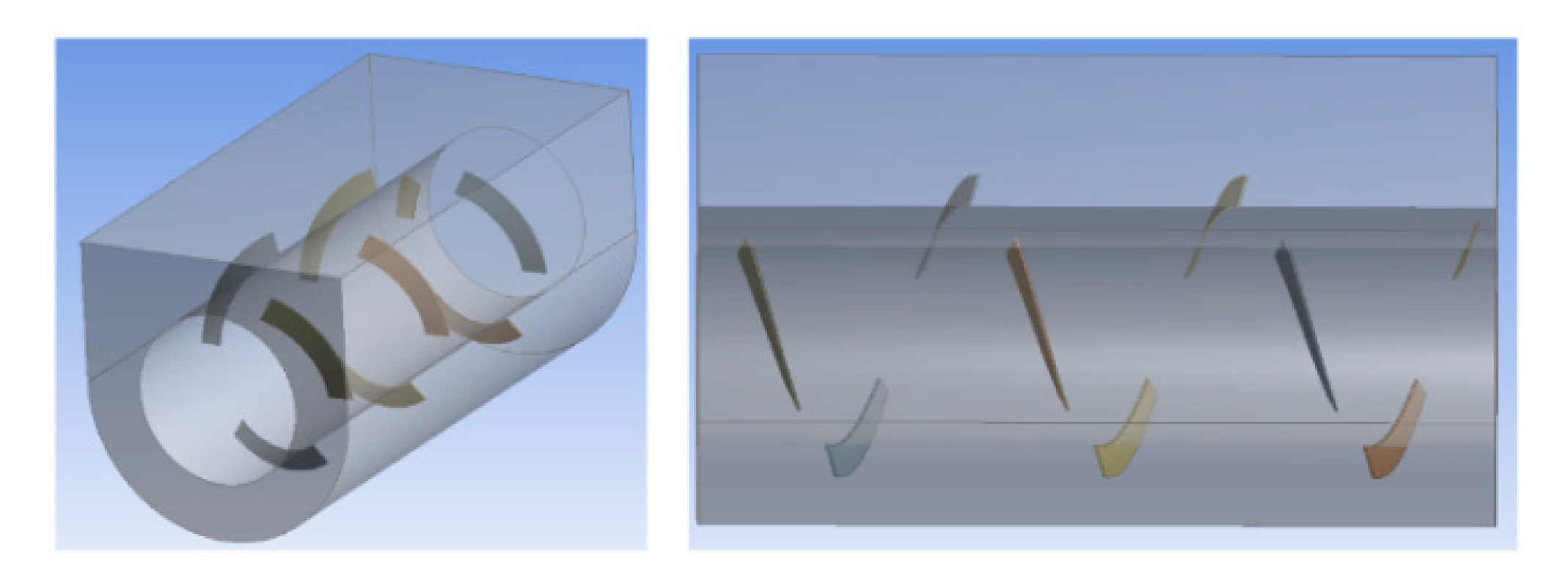
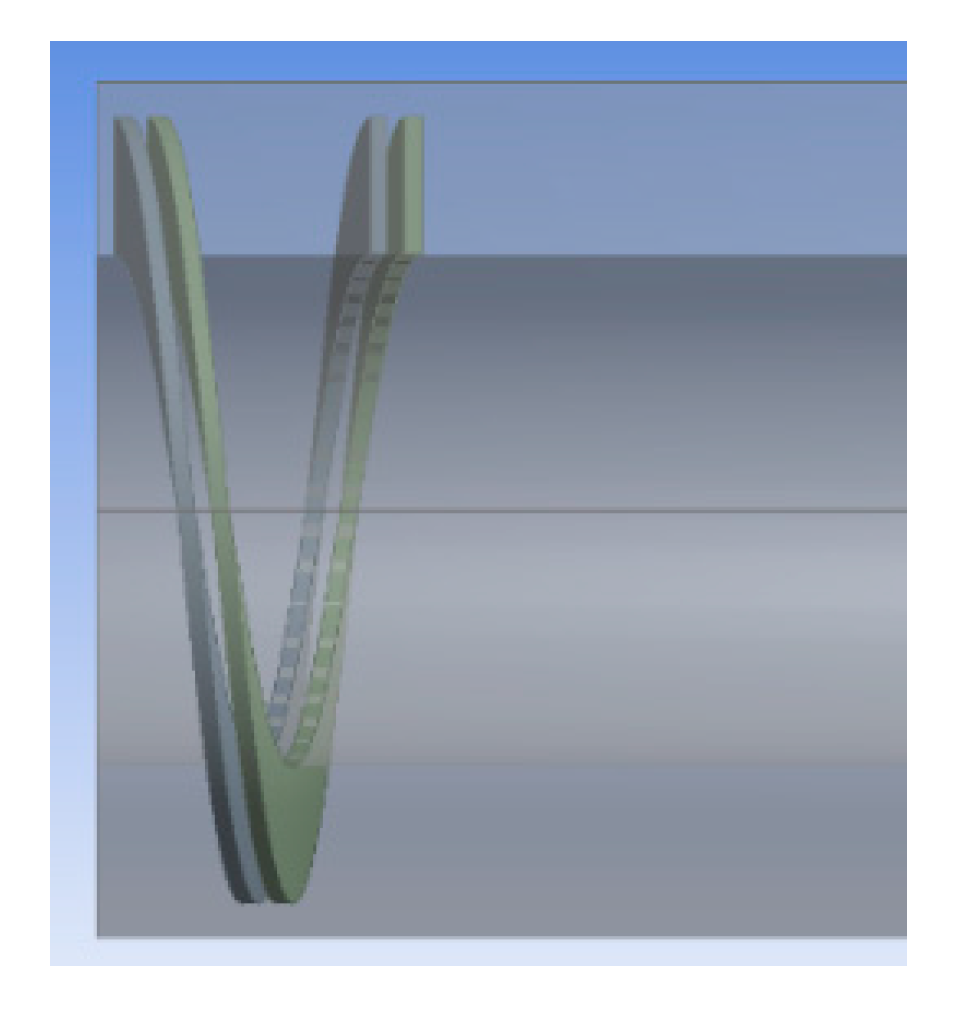
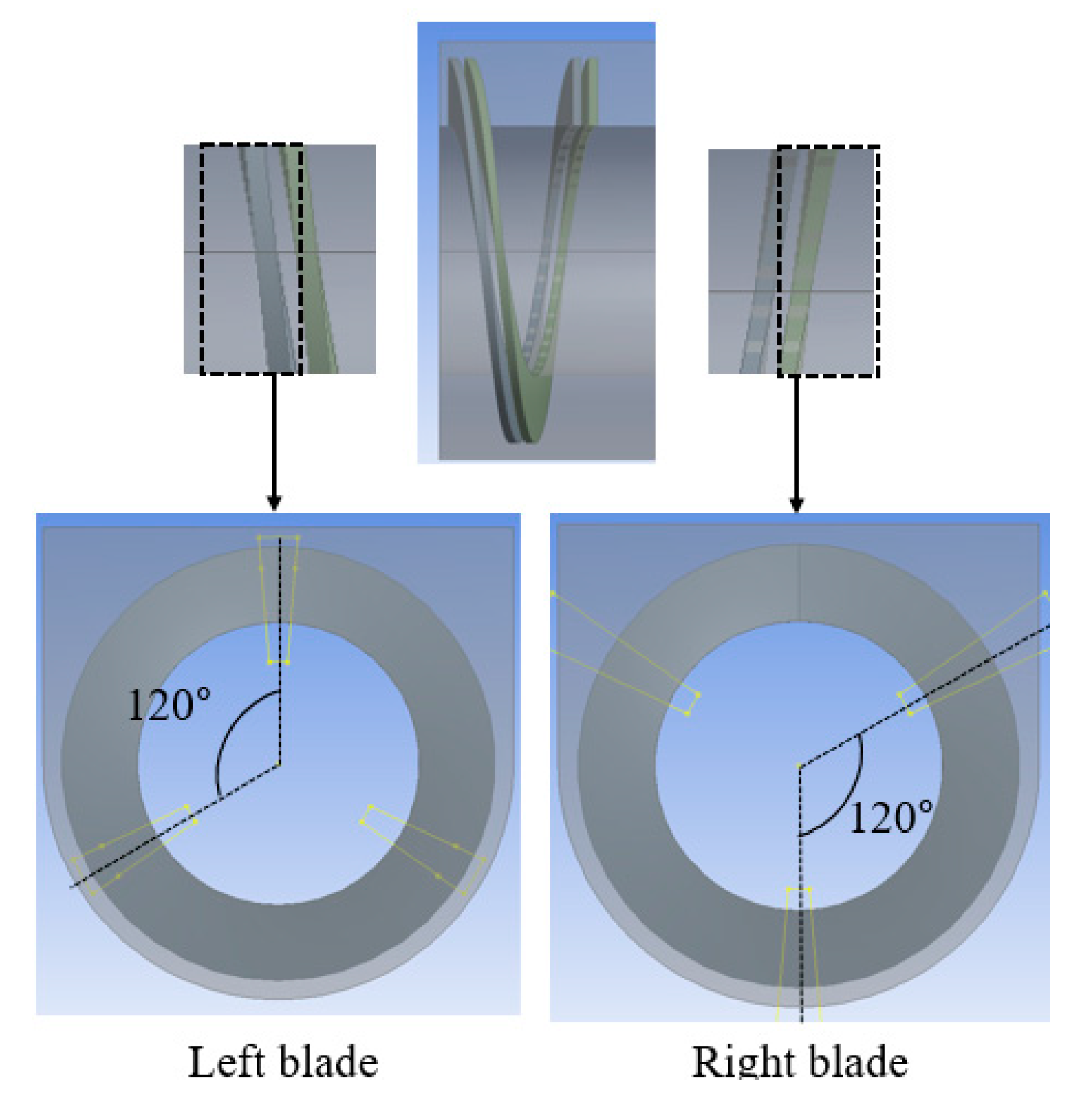


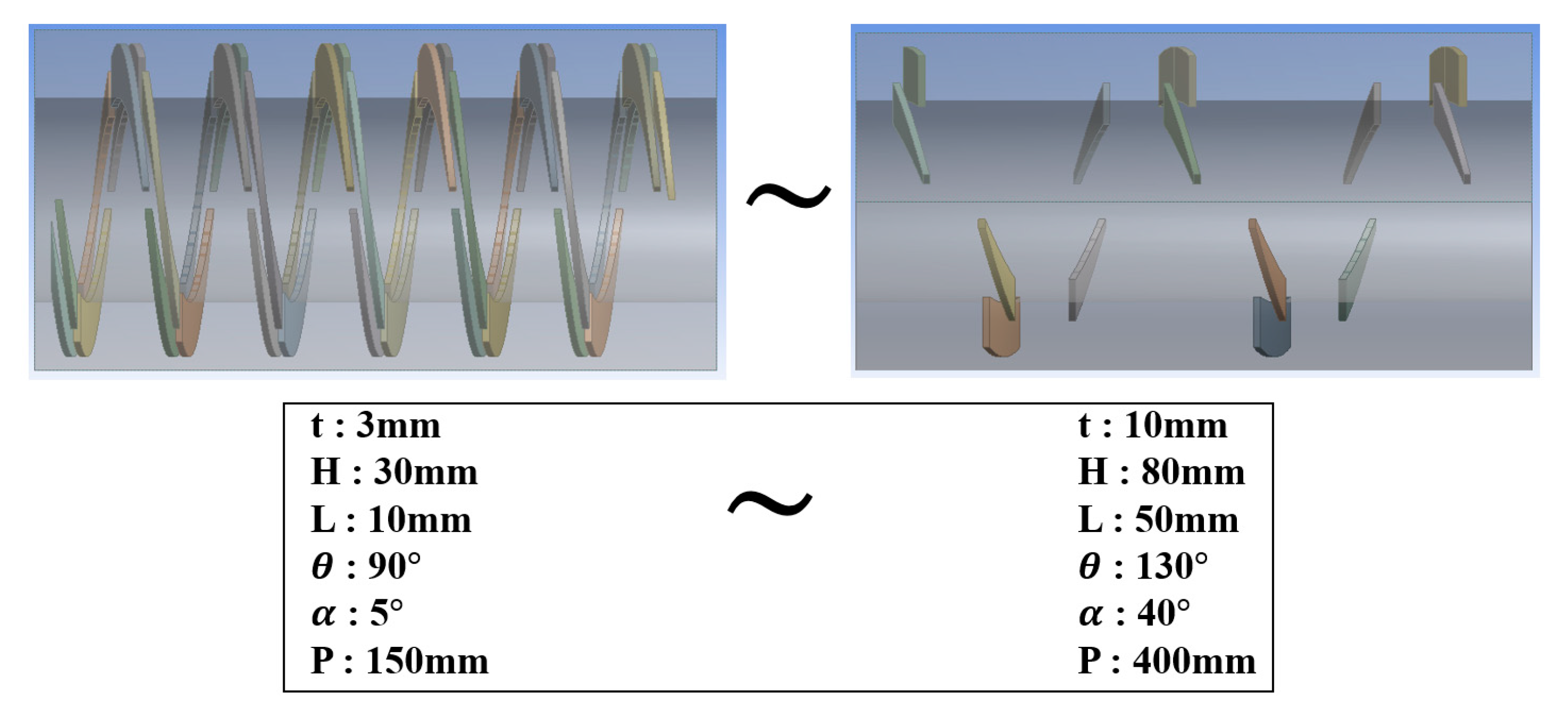
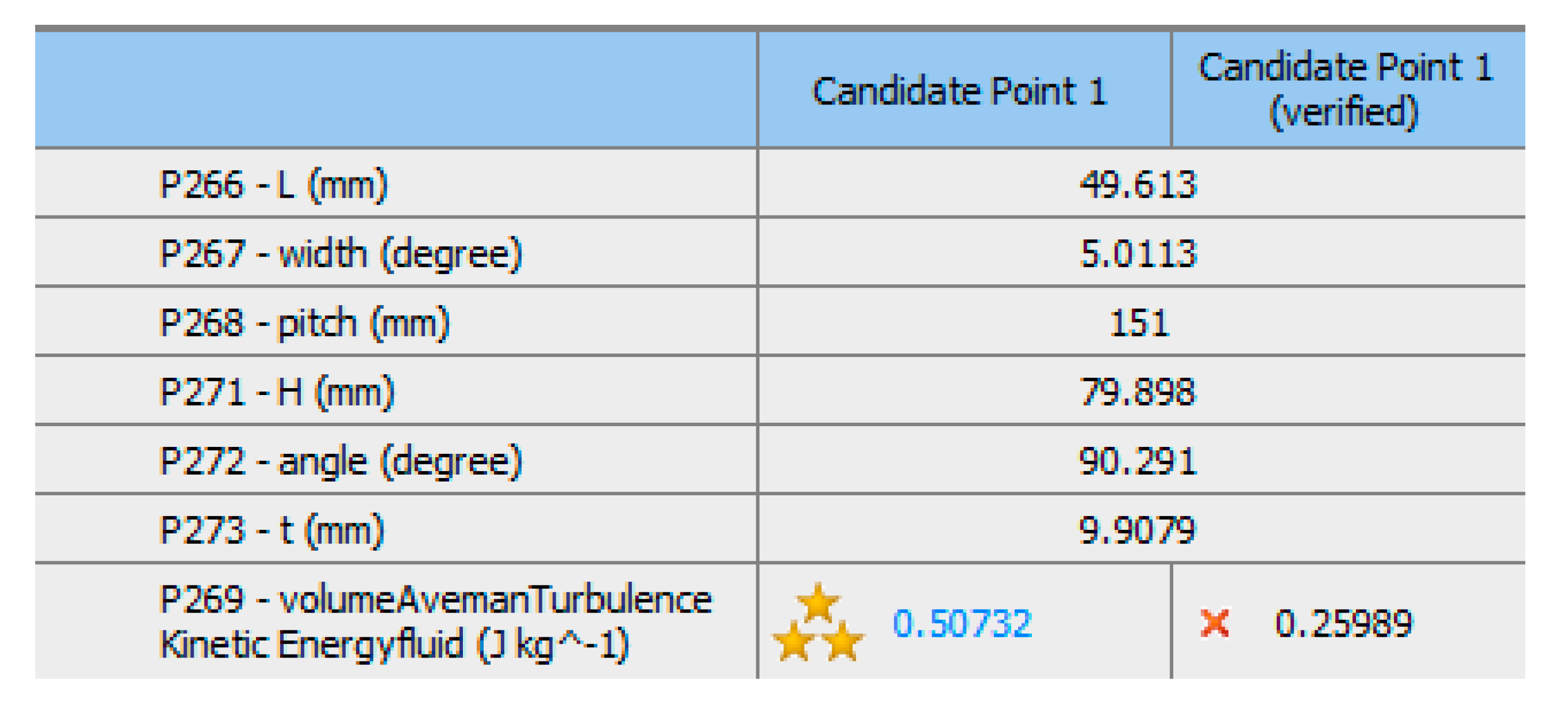
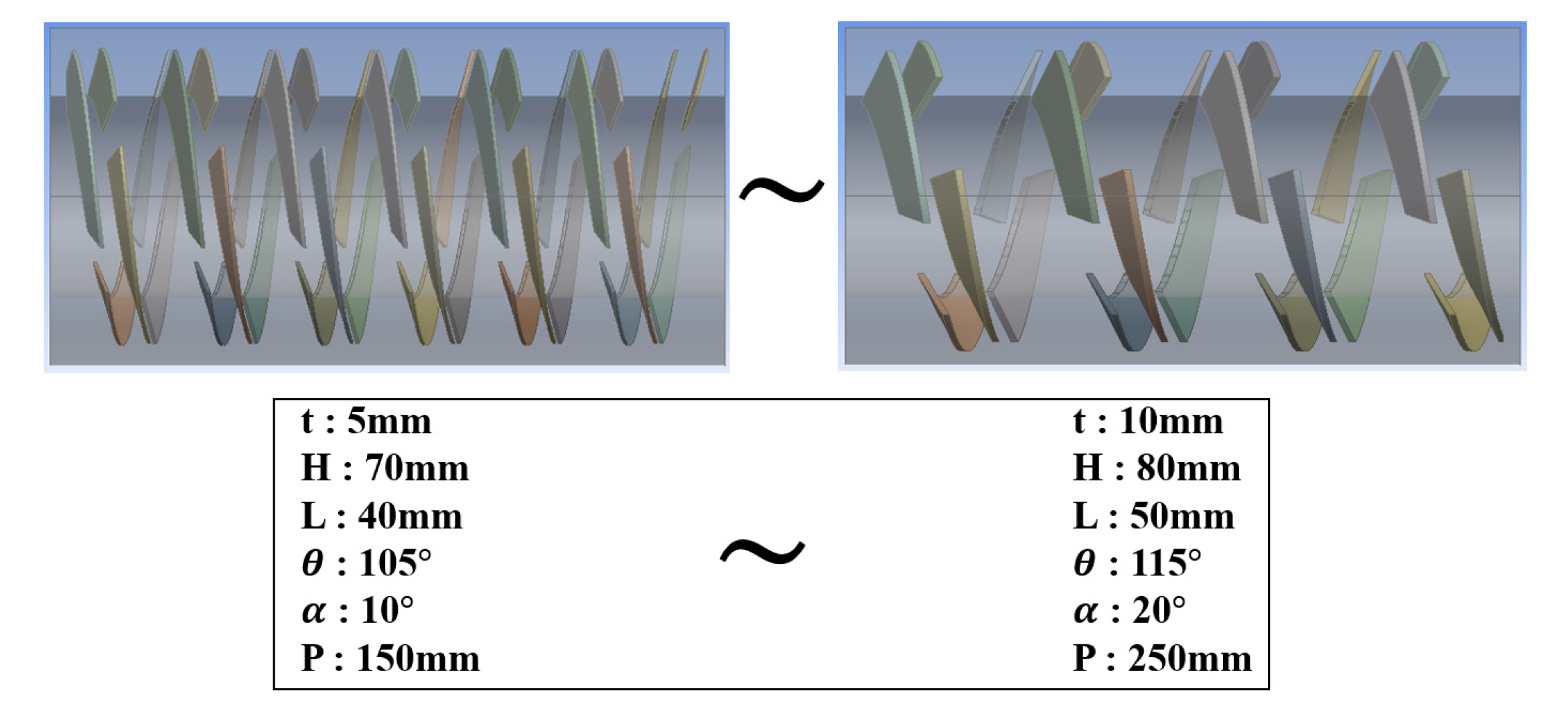
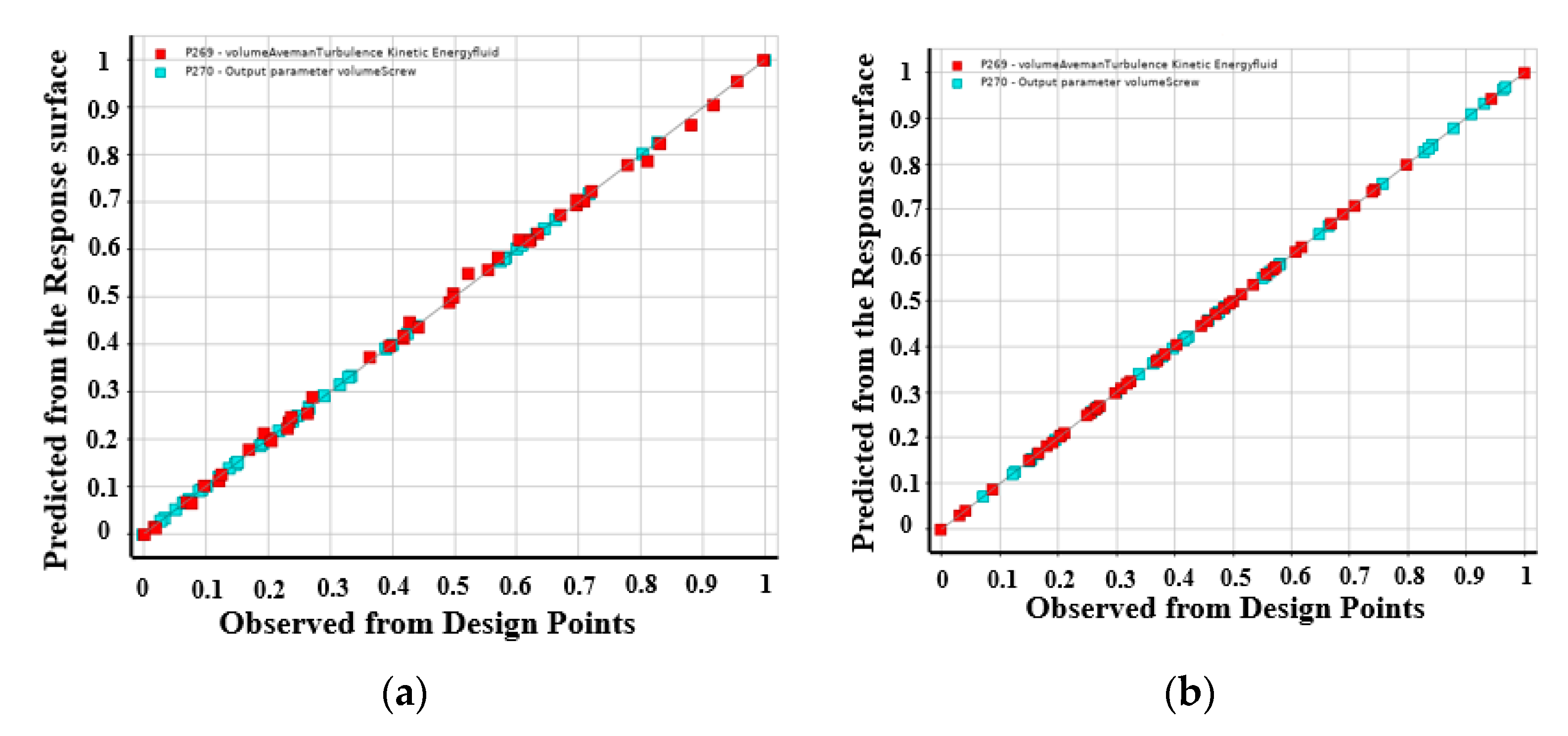
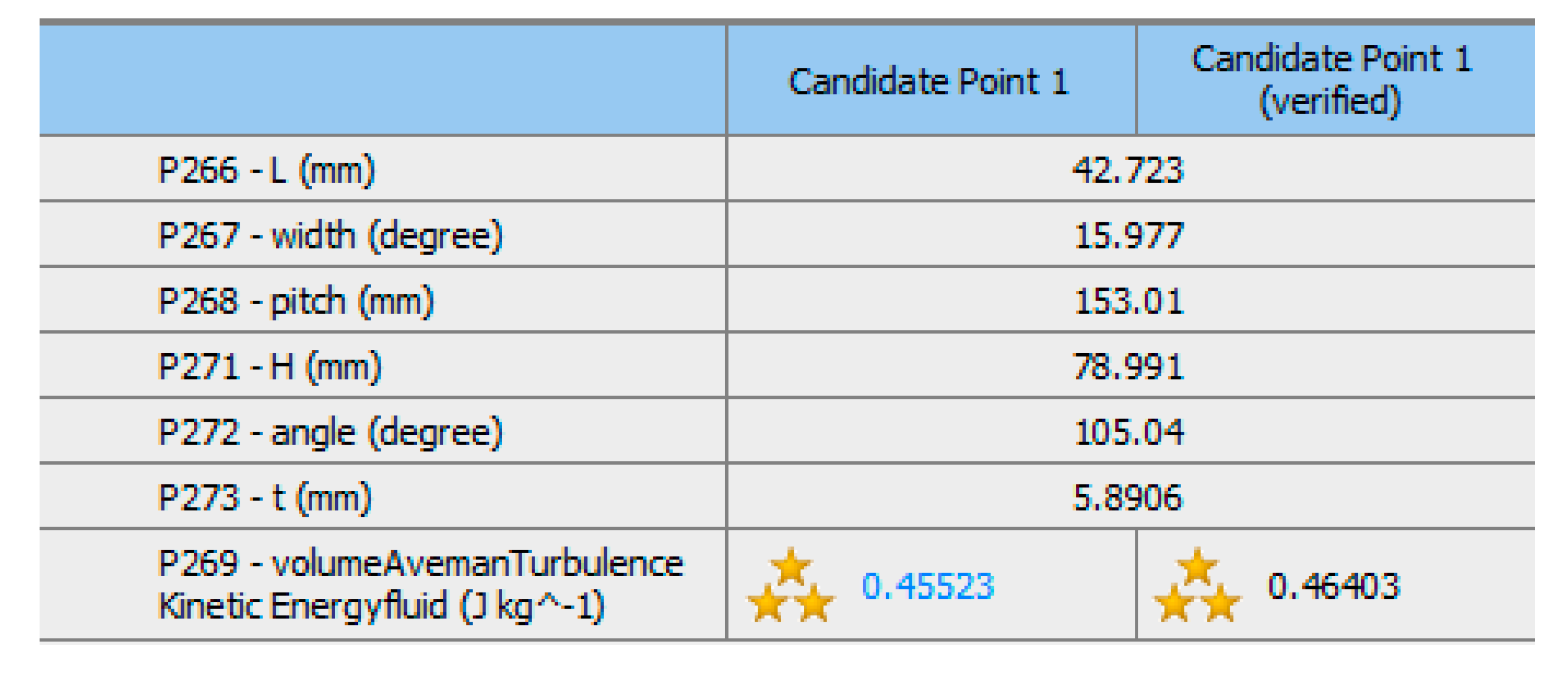
| Rotor Speed (rpm) | 19 |
|---|---|
| Temperature (C) | 150 |
| Solver type | Transient |
| Analysis type (s) | 14.47 |
| Turbulence model | SST k– |
| Viscosity (Pa·s) | 0 | 2 | 4 | 6 | 8 | 10 |
|---|---|---|---|---|---|---|
| Turbulencekinetic energy (J/kg) | 0.018 | 0.15 | 0.27 | 0.38 | 0.47 | 0.56 |
| Viscosity (Pa·s) | Turbulence Kinetic Energy (J/kg) |
|---|---|
| 4.5 | 0.299 |
 | |
| Candidate Point Predicted from Response Surface | |||||
|---|---|---|---|---|---|
| L | P | H | t | ||
| 49.6 mm | 5 | 151 mm | 80 mm | 90 | 10 mm |
| Candidate value of turbulence kinetic energy: 0.51 J/kg Verification value of turbulence kinetic energy: 0.26 J/kg Error: 48.8% | |||||
| Candidate Point Predicted from Response Surface | |||||
|---|---|---|---|---|---|
| L | P | H | t | ||
| 44 mm | 16.3 | 214 mm | 78 mm | 112 | 7.9 mm |
| turbulence kinetic energy: 0.39 J/kg | |||||
| Candidate Point Predicted from Response Surface | |||||
|---|---|---|---|---|---|
| L | P | H | t | ||
| 42.7 mm | 16 | 153 mm | 79 mm | 105 | 5.9 mm |
| Candidate value of turbulence kinetic energy: 0.45 J/kg Verification value of turbulence kinetic energy: 0.46 J/kg Error: 2.2% | |||||
| Existing Model | New Model |
|---|---|
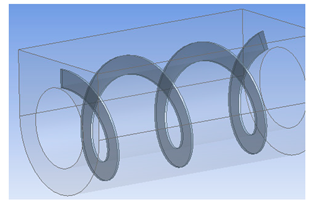 | 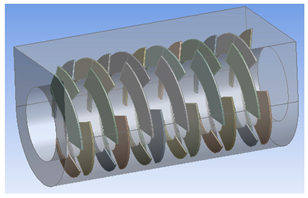 |
| 0.299 J/kg | 0.46 J/kg |
Publisher’s Note: MDPI stays neutral with regard to jurisdictional claims in published maps and institutional affiliations. |
© 2022 by the authors. Licensee MDPI, Basel, Switzerland. This article is an open access article distributed under the terms and conditions of the Creative Commons Attribution (CC BY) license (https://creativecommons.org/licenses/by/4.0/).
Share and Cite
Park, G.; Eom, T.; Kwak, H.; Kim, C. Optimization of Screw Mixer to Improve Drying Performance of Livestock Manure Dryer Using CFD Analysis. Appl. Sci. 2022, 12, 2872. https://doi.org/10.3390/app12062872
Park G, Eom T, Kwak H, Kim C. Optimization of Screw Mixer to Improve Drying Performance of Livestock Manure Dryer Using CFD Analysis. Applied Sciences. 2022; 12(6):2872. https://doi.org/10.3390/app12062872
Chicago/Turabian StylePark, Gunyoung, Taejin Eom, Hyoseo Kwak, and Chul Kim. 2022. "Optimization of Screw Mixer to Improve Drying Performance of Livestock Manure Dryer Using CFD Analysis" Applied Sciences 12, no. 6: 2872. https://doi.org/10.3390/app12062872





